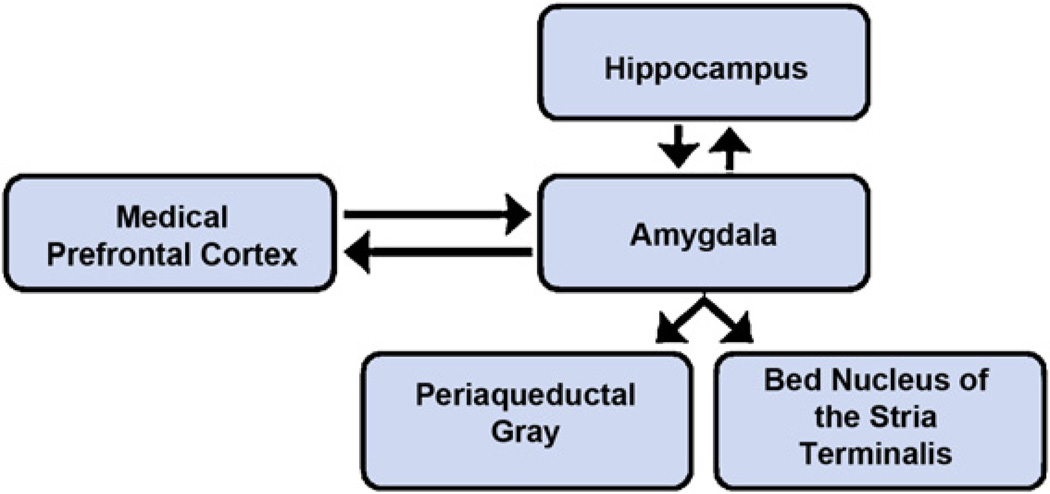Fig. 2.
Hypothetical model of the neural systems involved in detecting threats, and regulating behavioral and biological responses to threat. Central to this network is the amygdala, which responds quickly to potential threats in the environment and plays a key role in determining whether environments are perceived as safe or dangerous. The amygdala functions in concert with other brain regions including the hippocampus and medial prefrontal cortex, which can up-regulate or down-regulate amygdalar responses to threat. Moreover, behavioral and biological responses to threat depend on activation of other brain areas, including the bed nucleus of the stria terminalis, which coordinates autonomic and motor responses to threat, and the periaqueductal gray, which coordinates stereotyped defensive reactions to threat, such as immobility and panic. Activity in this threat-related neural network is potentiated for individuals with anxiety disorders, as well as for persons exhibiting high levels of trait anxiety.

